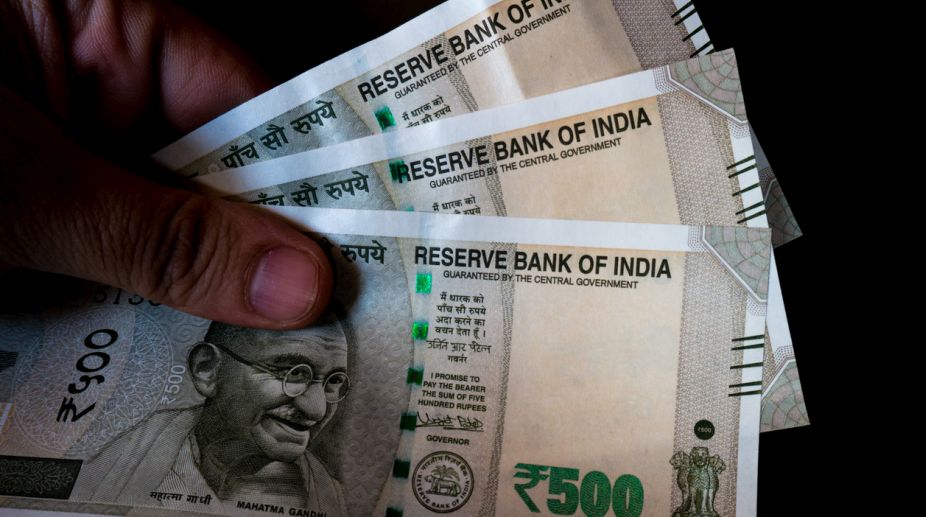Budget must address the needs of small farmers
India prepares to unveil its Budget 2025, there is a growing need to ensure that interests of small and marginal farmers are at the forefront of agricultural policymaking.

Representational Image (Photo Credits: Getty Images)
Title: Black Money And Tax Havens
Author: R Vaidyanathan
Advertisement
Publisher: Westland Publications
Advertisement
Pages: 184
Price: Rs 350
Black money and tax havens are the flavours of the day or months. So a book on the subject comes at the right time. Just how much black money is there in India? According to the book’s jacket, estimates vary from 10 to 20 percent of our GDP. Conservatively, Rs 15 lakh crore — 10 per cent of Rs 150 lakh crore, our GDP in 2016-17. And Indian money in tax havens around the world? Around Rs 65 lakh crore.
These astounding figures explain why black money is a topic that has elicited much debate in recent times. With talk of black money abounding during discussions at almost every political or social platform, the book delves into the history of black money, tax havens, the journey of unaccounted money over the years and substantiates this with authentic figures.
While the focus is on India, the author talks of black money in global economies, illicit flows and trade mis-invoicing. He describes in detail the phenomenon, the methodology and the inflows of black money into various countries at various points in history. He also tracks the steps initiated over the years by different governments against black money.
The author through this book conveys to the reader a vivid picture of black money, tax havens and the connection between the two.
He traces the generation of black money, its estimates and how and why it is spirited away to tax havens.
The book also traces the various reports, committees and studies carried out to estimate the extent of domestic black money.
All in all, it is a well-timed book packed in with much information.
The author suggests lower tax slabs for encouraging voluntary compliance, introduction of tax deduction at source (TDS) on high-value transactions, special bearer bonds, amnesty schemes and punishment to corrupt officials as measures that need to be taken by the government.
Giving the details of a tax haven and an insight into its business model and history, the author says: “One of the important functions of tax havens is to maintain the secrecy of the companies registered there. The actual purpose is to conceal the activities which take place in such jurisdictions.”
The book makes an attempt to estimate the amount of money stored in tax havens. “There are estimates of India’s illicit money in Switzerland since that country has been a long-time favourite of Indians hoarding money abroad,” the author writes.
“Measuring the size of the offshore economy is an exercise in night vision. It is hard to define it, it is fragmented and messy and it is swathed in secrecy. Official international efforts to measure the various aspects of the phenomenon have been inadequate,” he says.
The International Monetary Fund (IMF) estimates global black money — excluding Switzerland, China and Taiwan and oil exporting economies — at $18 trillion.
This estimate of the one of the most responsible financial bodies of the world has shocked the world. The extent of black and unsupervised financial economy in the world is now believed to be almost a third of the global GDP.
For the record, there is a complete list of non-cooperative tax havens as published by the Organisation for Economic Cooperation and Development (OECD). In fact, there are three lists: the blacklist (countries that ignore foreign fiscal authorities), a grey list (countries that supposedly lack fiscal transparency but are committed to change) and a third list, neither grey nor black, of countries that are ‘non-cooperative financial centres’.
Tax havens are generally considered villains. There is a positive side as well, since they benefit the economy of the particular country where the funds are invested. These countries basically offer foreign investors low tax rates and other tax features designed to attract investment with considerable diversity and thereby stimulate economic activity.
The book gives details on how the money accumulated as a result of tax evasion is used for financing offshore terrorism activities, human trafficking, arms smuggling and drug peddling.
The author states that most of America’s largest corporations maintain subsidiaries in offshore tax havens. At least 358 companies, nearly 72 per cent of the Fortune 500, operate subsidiaries in tax haven jurisdictions. Some of the worst offenders include Apple, American Express, Nike, PepsiCo, Pfizer, Morgan Stanley, Citigroup, Walmart, Bank of America, Google, Microsoft and Goldman Sachs.
The book also includes a chapter on Panama Papers, on what they have exposed, reactions to them and the Indian dimension.
The author lists less tax paid, ever-increasing corruption, higher rate of inflation, increasing liability for the country, increase in anti-social activity as some of the implications of increasing black money in the system.
Land and real estate transactions, financial market transactions, bullion and jewellery transactions, cash and use of counterfeit currency and trade- based money laundering are some of the most popular class of markets used for investment of black money.
This book is an outcome of the author being an observer of that journey as he has been a member of many regulatory bodies such as Reserve Bank of India, Sebi, Pension Fund Regulatory and Development Authority and Insurance Regulatory and Development Authority.
Advertisement